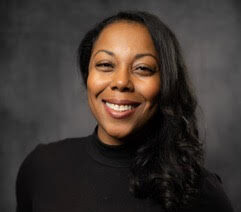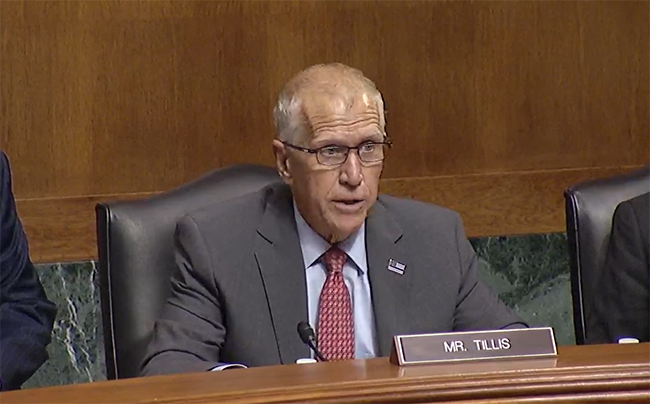For much of Maia’s life, she didn’t talk about her sickle cell disease, yet as she grew into her healthcare career, and became more active in healthcare policy, she began to understand just how powerful the patient voice can be when it comes to advocacy.
“I live with SC hemoglobin disease, and like many people who grow up with sickle cell, I didn’t share a lot about living with the condition,” she explains. “It wasn’t until I joined federal service, where I had the support of some colleagues after getting sick and being out of work for about a week, where others started to learn that I had sickle cell.”

As the Chief Policy Officer for Sick Cells, a national advocacy non-profit for sickle cell disease (SCD), Maia Laing works on a variety of policy priorities important to the sickle cell community, including issues around access, therapeutic treatment, data, and healthcare innovation.
In anticipation of Sick Cells’ “Therapeutics Unlocked” Conference, to be hosted in Washington, DC on Nov. 12-13, Bio.News sat down with Laing to better understand her journey as a patient advocate, as well as what she sees is still needed in sickle cell advocacy today.
Living with an invisible disease and finding her voice
“As a young child, I was relatively healthy, so I didn’t have a lot of hospital encounters,” Laing begins. “It wasn’t until my brother was born, also with the condition, and there was more complexity in his needs as a child, that our family found ourselves going to the hospital more frequently.”
As Laing’s story implies, sickle cell disease is hereditary. It also disproportionately affects people of African descent.
“Approximately 70,000 to 100,000 Americans have sickle cell disease, the most common form of an inherited blood disorder,” and the trait is even more common, the American Society of Hematology explains. “Sickle cell trait is an inherited blood disorder that affects approximately 8% of African-Americans.”
But as any patient with SCD can tell you, the disease manifests very differently from one patient to another, meaning that treatment, options, plans, and care for SCD patients need to be highly tailored. It also means that education on SCD, whether it be for caregivers, doctors, researchers, or policy makers, is paramount.
This is especially true, given the fact that the manifestation of SCD can change over a patient’s life. “When I was younger, it was a lot more about managing pain,” says Laing. “As I’ve gotten older, it’s been a lot more around the spleen, the gallstone, and my eyes. So SCD plays out in a very systemic way as you age.”
Even though SCD is a big part of a patient’s life, it is often a challenge to share, Laing explains.
“It’s very difficult to communicate to people the impacts of sickle cell because it’s not a disease you can see,” she says. “And so when people are interacting with you, they don’t realize that you’re managing these challenges because, as a sickle cell patient, you’re oftentimes wanting to function and you don’t want to be treated differently.”
This not only presents challenges day-to-day, but can also deter patients from finding their advocacy voice. Despite the challenges, Laing explains, two elements to her work helped shape the advocacy she does now.
“It wasn’t until I joined the federal government and started working for the Centers for Medicare & Medicaid Services (CMS) Innovation Center and worked for the U.S. Department of Health and Human Services (HHS) that I started to understand where policy and programs really influenced the way that the healthcare system moved,” she says.
The other piece of the puzzle came from her later work on the public side of the healthcare sector.
“That’s when the disparity started to become glaringly clear to me around how we conduct research,” she explains. “How do we create solutions, build products, provide coverage, and support access? Understanding that the landscape for coverage and access varies significantly across the country. I didn’t just see this as it related to sickle cell, but also in tribal, rural, and other underserved communities.”
Putting those two pieces together through the lens of her own experience has impacted how she works with Sick Cells today, as well as how the organization maps out their policy priorities.
“I think building on all of that experience and advocacy has led me to this moment where I see the role of policy as being critical, because the policy influences where the resources go and how we navigate certain decision making,” says Laing.
So what are some of the biggest policy needs of the SCD community today?
Access at every level
“Access in itself, is a very loaded area,” notes Laing.
Given that sickle cell is a rare disease, and that it occurs most frequently in the Black community, Laing has seen just how simultaneously complex and unique the access issues for SCD patients can be.
“We can talk about access from a perspective of coverage and ensuring that people have adequate coverage in order to receive care, but we can also talk about access from the perspective of available providers and people with the appropriate expertise around SCD,” says Laing.
From her perspective, patient access issues can be broken down more or less into four areas: advocating for one’s self, improving provider numbers and networks, addressing geographic disparities, and addressing issues associated with transitions of care.
“As someone who works in the healthcare space, who’s very familiar with the system and how things work, there are still challenges to being able to advocate for myself in the healthcare system, let alone if someone outside of the healthcare space tried to do it,” explains Laing. “And it is extremely scary because these are very high risk moments, and thankfully for me, I was able to navigate them, but others are sometimes not so lucky.”
This issue, as well as the issue of poor provider numbers and networks, was something that Laing had to face head on this year during her pregnancy.
“Given that I live with sickle cell disease, I had to have a high-risk obstetrician (OB) and hematologist,” Laing says. However, when she initially looked for a hematologist in New York she couldn’t find one—even finding that many of the sickle cell specialized hematology practices she reached out to were closed. Instead, she had to first find a high-risk OB who was then able to give her a reference to a hematologist. Then came the challenges of patient self-advocacy in a healthcare setting.
“We developed a plan of care based off of my sickle cell around delivery. When it came time to deliver—despite a documented care plan and approach for how we would manage certain events around my sickle cell—when those events actually happened, that care plan was not acknowledged or recognized, and it took an immense amount of advocacy by myself after having a very unplanned delivery,” Laing recalls.
But Laing acknowledges that she was fortunate in one way in particular—she lives in a major metropolitan area. SCD patients living in rural areas often have to travel much further, sometimes even across state lines, to find appropriate care.
“There’s obviously geographic disparities, and being able to access providers,” says Laing. “We find a lot of the providers are centralized in major cities and academic hubs. And again, I think this is obviously where the research is done and where the expertise lies, but patients are spread in many different cases where traveling to get care can take a lot of time.”
Another issue tied to geographic disparities is in transition of care, whether a SCD patient is moving from state-to-state, or from pediatrics to adult care.
“We’ve talked about transitions of care historically, from pediatric to adulthood,” says Laing. “Transitions of care for any individual is challenging; the challenges for a sickle cell patient are high because oftentimes there’s a whole care team that is required. And so whether someone is moving from one state to another, whether they’re going to college, or they are going from pediatric to adult, or any type of transition creates a significant risk for individuals with sickle cell.”
And it is important to note that delays in care or medication for SCD patients can have acute consequences, even resulting in hospitalization, so addressing this issue is top of mind for advocates.
Clinical trials that build trust
“When we get into clinical trial participation, there’s significant challenges around: what are the clinical trials, the understanding of clinical trials and how this could be a viable opportunity or alternative for patients, how to get educated and enroll, and who to talk to about them if they want to learn more,” explains Laing.
Doing the work to bridge the education gap is worth it because advancement in care for SCD, helps more than just the SCD community.
“There are challenges in overcoming the fact that the sickle cell community represents about 100,000 Americans, though we know globally the population is roughly 5 million. And so it’s difficult to bring innovation to this space,” she says. “But it is important to remember that SCD is a rare disease, and solutioning for the SCD community also brings opportunity for other rare disease communities, where we can leverage innovation to bring existing solutions to new populations or communities.”
And when it comes to clinical trials and the innovation they are bringing, Laing notes that diversity of research is key.
Innovation for all
Recent years and advancement in cell and gene therapy have proven to be game-changing for SCD patients, but Laing is adamant that research needs to stay diverse and not risk leaving some patients behind by becoming too focused.
“There is a range of areas of focus for individuals with sickle cell,” says Laing. “Not everyone will benefit from the curative therapies. There are therapeutics on the market today that people can benefit from that we want to improve access to, with the goal of reducing burden. My hope, from a policy perspective, is to bring together a fully woven strategy that meets the needs of multiple different stakeholders in moving the ball forward for the SCD community.”
Another issue Laing has noticed has been the siloing of both SCD research areas and policy.
“We have SCD policies and programs that support newborn screenings and surveillance,” she notes. “I want those programs to sustain. We also need to continue to advance on building a longitudinal understanding of individuals with SCD. And today, we struggle to do that, though the federal government does have the bandwidth and the authority to do so.”
This is an area that Laing sees advocacy organizations being able to help address.
“We want to focus on partnering with the federal government around bringing together areas of its authority to better support SCD and we want to work with legislators around advancing policies for SCD patients that support them in receiving the resources that they need,” says Laing. “And we want to do this quickly, given the introduction of the cell and gene therapy. It has reemerged the conversations around sickle cell, and we want to use this as an opportunity to remind people that not everyone is eligible for those therapies, and that we need to continue to develop solutions for the entire population.”
Laing says she believes that the U.S. is capable of achieving amazing things for the SCD community.
“I’m also excited about what these therapeutics will do for other communities as we start to introduce different approaches through similar mechanisms,” she says. “But these innovations are not going to answer the problem for everyone, and we are losing drugs on the market related to sickle cell, and I’m concerned that there will be less and less.”
Luckily, as Laing notes, there have been some positive steps taken on the federal level to help make the research and development of SCD therapies more viable, as well as more accessible once drugs hit the market.
Advocacy at any level
Though Laing’s life is committed to sickle cell advocacy, she reminds patients, caregivers, and community members that advocacy can happen at any level.
“Advocacy is simply about building community and allowing other people to see what our challenges are, and helping people to see our value and that we should all be advocating at our places of comfort and know that our voices can be heard in any setting,” she explains.
Advocacy can start by simply explaining SCD to your community, and sharing your story so others can understand the disease, Laing says.
“Oftentimes we believe that people won’t understand, or we don’t want to be looked at differently,” she acknowledges. “But the other side of that is it’s amazing how much people find energy to advocate for the people that they care about—oftentimes more than they may find energy for themselves. And many of us are looking for a cause or a purpose or a reason to fight for, and we would be surprised by how many people are willing to stand up for our purpose, our cause, and our reason.”
And as patients build their community, they are then able to ask themselves, what next?
“Advocacy simply is raising awareness: What does it look like? What are your needs? What’s most important to you? And you can do that on multiple levels,” Laing says.
If you are interested in learning more about sickle cell disease and how you can advocate, visit: sickcells.org where you can also get information about their Sick Cells “Therapeutics Unlocked” Conference in November 2025.




